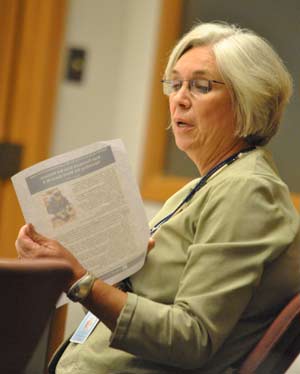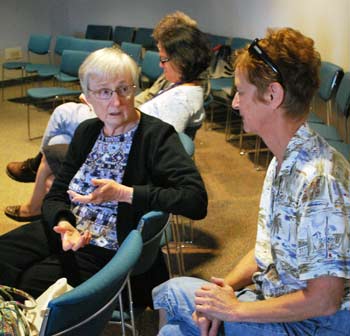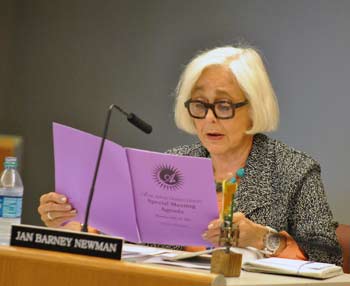Column: Mapping Ann Arbor’s 2012 Elections
With the 2012 general elections well behind us, it’s time for politicians to put on their very serious faces and make very serious pronouncements like, “The voters have spoken.”
I prefer to make a funny face and ask: How is a judicial candidate like the city park system? Or for a question that sounds less like the set-up to a punch line: What’s the deal with downtown Ann Arbor and its connection to the art millage and the library bond proposal?

Voting results from two Nov. 6, 2012 proposals on the Ann Arbor ballot: The Ann Arbor District Library bond proposal and the public art millage. Maps do not include the portion of the library district outside the city boundary. Maps show only in-person votes, not including absentee voters. Shades of green through white indicate a majority voting yes. Shades of lavender through purple indicate a majority voting no. (Maps by The Chronicle.)
Of course, politicians are at least partly right when they say that the voters have spoken. But what did the voters actually say? It’s easy to make true statements about voter sentiment – if you stick to the text of the ballot.
For example, in the non-incumbent race for judge of the 22nd Circuit Court, more voters preferred to have Carol Kuhnke decide future Washtenaw County court cases than to have Jim Fink decide them. You can tell that just from the ballot and from the results. But it’s possible to make a stronger claim: More voters preferred the kind of person Kuhnke is – a candidate endorsed by the city of Ann Arbor Democratic Party. And to support that claim, we’d need to look at other results, like those from the presidential election.
Or by way of another example, the election results indicate that a majority of Ann Arbor voters said they do not want the city to levy an 0.1 mill tax to pay for art in public places. That’s all you can tell from the ballot question and the results. To make stronger claims – related, for example, to what (if anything) voters were trying to say about the existing Percent for Art program – you’d need to find some other way to explore the content of voters’ minds.
The same goes for the Ann Arbor District Library bond proposal and the parks maintenance and capital improvements millage renewal. “Do not tax us to make the bond payments for a new downtown library building, but please continue to tax us to pay for city park needs.” That’s all voters said. They didn’t say anything about their favorite books, or which city park is the best. (By the way, it’s West Park, located in Ward 5, which is indisputably the highest-numbered ward in the city.)
Yet we’d like to divine something more from the results than just the results.
This column, which is heavy on impressionistic conclusions based on maps, and light on rigorous statistical analysis, begins with mapped illustrations of some basics. For example, mostly Democrats live in the eastern portion of Washtenaw County. And in Ann Arbor, Wards 2 and 4 are the strongest city wards for Republicans – even though those wards also lean Democratic. That’s still true 20 years after Ann Arbor’s ward boundaries were drawn to achieve that effect.
The column concludes by illustrating a possible geographic connection between the failed public art millage and the failed downtown library bond proposal – namely, downtown Ann Arbor. [Full Story]







